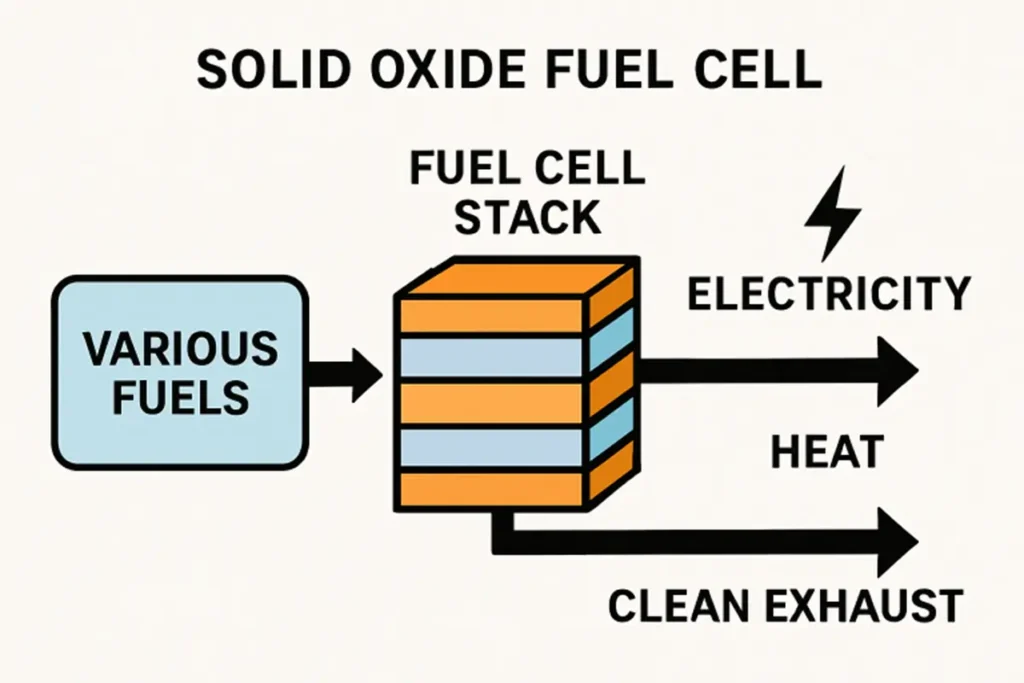Introduction to Solid Oxide Fuel Cells
Solid Oxide Fuel Cells (SOFCs) are at the forefront of clean energy innovations, providing a direct conversion of chemical energy into electricity with remarkable efficiency. Unlike traditional combustion-based systems, SOFCs operate through electrochemical reactions at high temperatures ranging typically from 600°C to 900°C. This technology excels in flexibility, capable of using multiple fuels, including hydrogen, natural gas, and biogas, thereby granting it broad utility across diverse energy infrastructures. The versatility and performance of SOFCs are already being leveraged by industry leaders, including Bloom Energy solid oxide fuel cell, to create reliable, low-emission power solutions for residential, commercial, and industrial sectors.
The fundamental principle of SOFCs involves the movement of oxygen ions through a solid oxide electrolyte. This process produces electricity, heat, and minimal waste products. As global demand for sustainable energy rises, the role of SOFCs in decarbonizing power generation and supporting grid resilience becomes increasingly important. Their inherent ability to use various feedstocks makes them suitable for a world transitioning away from fossil fuels to more sustainable and renewable options.
Advantages of SOFC Technology
The promise of SOFCs stems from their remarkable set of advantages. First, their high efficiency sets them apart — SOFC systems routinely reach electrical efficiencies up to 60%, and even higher when waste heat is captured and utilized in combined heat and power (CHP) arrangements. This is a substantial improvement over many traditional power generation methods, which tend to lose much of their input energy as waste heat.
The flexible fuel compatibility of SOFCs empowers them to bridge current energy infrastructures with the future hydrogen economy. They can operate using existing natural gas pipelines, biogas sourced from organic waste, or pure hydrogen, enabling adaptable, low-carbon solutions during the global energy transition.
In addition to efficiency and flexibility, SOFCs are recognized for their environmental benefits. Operating at high temperatures facilitates cleaner reactions, resulting in virtually no emissions of nitrogen oxides (NOx), sulfur oxides (SOx), or particulate matter. As a result, they significantly reduce local air pollution and help curb greenhouse gas emissions—a critical piece in the fight against climate change.
Beyond environmental impact, SOFCs offer excellent scalability, from compact systems for residences to large-scale installations for industry and grid support. Their silent operation and minimal vibration enable deployment in urban and sensitive environments.
Recent Technological Advancements
Research and development efforts have steadily advanced SOFC performance, durability, and cost-effectiveness. Innovative catalyst coatings have recently been shown to triple the efficiency of SOFCs within minutes, massively improving their attractiveness for commercial deployment. According to studies highlighted by Phys.org, these advancements reduce startup time, broaden potential applications, and help lower the total system cost.
Material science breakthroughs have also enabled lower operating temperatures, mitigating one of the main barriers to widespread adoption — the requirement for specialized, heat-resistant materials. These improvements not only extend the system’s lifespan but also reduce manufacturing costs, which is crucial for making SOFCs a feasible solution for utilities, businesses, and consumers.
Support for these innovations is growing worldwide, as evidenced by the International Energy Agency’s recent report, which indicates that global clean energy investment is expected to reach $2 trillion in 2024. This highlights the importance of accelerating the commercialization of SOFC technology.
Integration with Renewable Energy Sources
SOFCs play a pivotal role in integrating renewable energy into the modern grid. Their operational flexibility enables them to complement intermittent renewable sources, such as wind and solar, by providing reliable baseload power and serving as energy storage through reversible operation modes. Research has shown SOFCs are technically feasible for use in photovoltaic (PV)-powered residential buildings, where they significantly improve overall system reliability and efficiency.
This hybrid approach enables households and businesses to maximize their use of renewable energy, utilizing SOFCs when sunlight or wind is insufficient. By bridging the gap between renewables and demand, SOFCs reduce dependence on carbon-intensive peaking plants and provide resilience to power systems—key to a decarbonized, stable energy future. For further reading, visit the analysis by Reuters on clean energy technologies closing the gap with fossil fuels.
Advancements in SOFC technology are focusing on improving lifespan, reducing costs, and enhancing integration potential. With continued innovation, SOFCs are expected to become an even more significant driver of the global shift toward clean and sustainable power.
Challenges and Future Outlook
Despite significant progress, the adoption of SOFCs faces certain challenges. Chief among them are high initial system costs, primarily tied to the specialized materials needed for operation at elevated temperatures. Research efforts are focused on lowering these operating temperatures to widen material options and reduce associated expenses.
Concerns over degradation over time and the complexity of system integration with existing grids remain obstacles. However, ongoing innovation in catalyst materials, cell design, and modular system architectures is making steady headway in addressing these issues. The increased interest and investment shown by government organizations such as the U.S. Department of Energy further underscore the importance of accelerating SOFC technology commercialization.
Looking ahead, the role of SOFCs in achieving global clean energy targets is clear. As costs continue to decline and performance improves, SOFCs are positioned to provide dependable, versatile, and sustainable power—supporting everything from industrial operations to off-grid communities and smart cities.
Conclusion
Solid Oxide Fuel Cells exemplify the future of clean, adaptable, and efficient energy solutions. Combining high efficiency, fuel flexibility, and compatibility with renewable power, SOFCs are well-suited for the evolving energy landscape. With global research and investment accelerating, these advanced fuel cells are likely to become a cornerstone technology for delivering low-carbon, resilient power to communities worldwide.
Also Read
